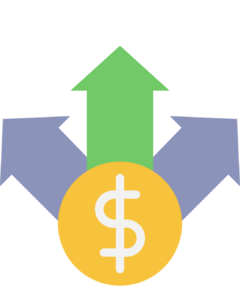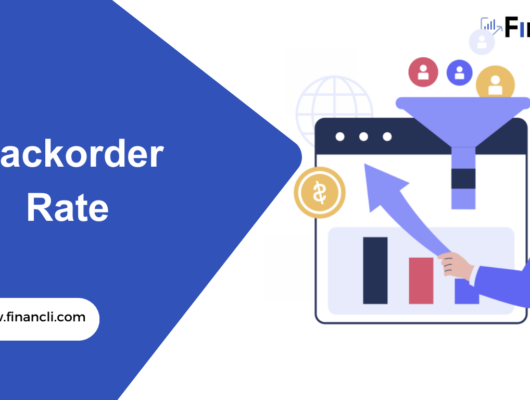Burn Rate
Burn rate is a term commonly used in finance and business to refer to the rate at which a company spends its available funds or capital. It reflects how much money a company is “burning” to maintain its operations and activities.
In other words, burn rate refers to the amount of cash a company spends each month or week to cover its expenses, such as salaries, rent, utilities, inventory, and other operational costs. This metric is particularly important for startup companies or businesses that are not yet profitable. It helps indicate how long the company can continue to operate before it runs out of cash.
Financial Burn Rate Report
A financial burn rate report is a document that tracks the rate at which a company is spending its cash reserves over a specified period. It is a critical tool for startups or companies with a high burn rate, where the expenses exceed the revenue generated.

The financial burn rate report provides insights into a company’s financial health by analyzing the monthly or quarterly expenses and the remaining cash balance. It helps the management to determine how long the company can sustain its operations based on the available cash reserves.
By analyzing the financial burn rate report, the management can make informed decisions about reducing expenses, raising funds, or pivoting the business model to increase revenue. The report is also essential for potential investors and stakeholders as it provides insight into the company’s financial position and the potential risk of running out of cash.
Overall, the financial burn rate report is essential for monitoring a company’s financial health, especially in the early stages of a startup or during significant growth or change.
Formula
The formula for burn rate is:
Burn Rate = (Total Operating Expenses – Non-Cash Expenses) / Number of Months Before Cash Runs Out
Where:
- Total Operating Expenses: the total amount of money a company spends on its operations, including salaries, rent, utilities, inventory, and other operational costs.
- Non-Cash Expenses: expenses that don’t require cash payments, such as depreciation or amortization.
- Number of Months Before Cash Runs Out: the estimated time a company has before it runs out of cash, based on its current cash balance and burn rate.
For example, a company has total operating expenses of $100,000 per month, non-cash expenses of $10,000, and a cash balance of $500,000. Based on this information, It calculates as follows:
Burn Rate = ($100,000 – $10,000) / ($500,000 / $100,000) = $90,000 / 5 = $18,000 per month
This means that the company is burning through $18,000 per month to maintain its operations and activities, and at this rate, it has about five months before it runs out of cash.
What is SaaS Burn Rate?
SaaS Burn Rate is specific to software as a service (SaaS) companies. It refers to the rate at which a SaaS company spends its available funds to maintain its operations and activities. SaaS Burn Rate is an essential metric for SaaS companies, especially those not yet profitable or in the early stages of growth.
SaaS Burn Rate calculates using the same formula as the regular one, which is:
- SaaS Burn Rate = (Total Operating Expenses – Non-Cash Expenses) / Number of Months Before Cash Runs Out
However, a SaaS company’s operating expenses may include additional costs, such as customer acquisition costs, hosting fees, and server maintenance costs. These expenses can be significant for SaaS companies. A reason for that is they often need to invest heavily in marketing and customer acquisition to drive growth and increase their user base.
SaaS Burn Rate is particularly important for SaaS companies because of the recurring revenue model. Unlike traditional businesses, SaaS companies typically generate revenue from their customers’ monthly or annual subscription fees. However, they may also incur high upfront costs in acquiring customers, building their software platform, and investing in research and development. This means that SaaS companies may have a longer runway before they become profitable. They must carefully manage their it to have enough cash to sustain their operations and continue growing.
Decent Burn Rate for a SaaS Company
A “good” burn rate for a SaaS company can vary depending on several factors. These include the company’s growth stage, revenue and profitability trajectory, and the amount of funding it has raised. In general, a reasonable burn rate for a SaaS company allows the company to invest in growth and product development while maintaining a healthy cash balance and avoiding the risk of running out of funds.

A typical benchmark for SaaS companies is a burn rate that allows them to operate for 18-24 months before running out of cash. This provides a reasonable amount of time to continue to grow the business and raise additional funds if needed. However, this is not a hard and fast rule. And can vary depending on the specifics of the company and its market.
Ultimately, the burn rate considered “good” for a SaaS company will depend on the company’s circumstances and goals. For example, SaaS companies with solid revenue growth and profitability may sustain a higher burn rate to continue investing in growth. In contrast, companies that are not yet profitable may need to be more cautious to avoid running out of cash. The key is to carefully manage it in relation to the company’s cash position and overall financial goals.
Importance for a SaaS Company
Burn rate is an essential metric for any company, but it is particularly important for SaaS companies. Here are some of the reasons why:
- Cash flow management: SaaS companies typically have a high upfront cost to acquire customers and develop their products. As a result, they often have a longer runway before they become profitable. By tracking their burn rate, SaaS companies can carefully manage their cash flow and ensure enough runway to continue investing in growth and development.
- Growth management: SaaS companies are often in a highly competitive market, with many players vying for market share. By tracking their burn rate, SaaS companies can ensure they are investing in growth at a sustainable pace that allows them to compete effectively.
- Investor relations: SaaS companies often rely on investors’ funding to grow and expand their operations. By tracking their burn rate and demonstrating that they are managing their cash flow effectively, SaaS companies can build investor confidence and demonstrate their ability to execute their business plans.
- Product development: SaaS companies often need to invest heavily in product development to stay ahead of the competition and continue attracting and retaining customers. By tracking their burn rate, SaaS companies can ensure they are investing in product development at a sustainable pace that allows them to continue to innovate.
Overall, the burn rate is an essential metric for SaaS companies as it helps them to manage their cash flow, ensure sustainable growth, build investor confidence, and continue to invest in product development. In addition, by carefully managing their burn rate, SaaS companies can position themselves for long-term success in a highly competitive market.
Types

There are several types of burn rates in business and finance. Here are some of the most common types:
- Gross burn rate refers to the total amount of money a company spends each month, including all expenses and costs, before considering any revenue.
- Net burn rate: This is the gross burn rate minus the revenue a company generates monthly. It gives a more accurate picture of how much cash a company burns each month to maintain its operations.
- Operating burn rate: This is the total amount of money a company spends each month on its core operations, such as salaries, rent, and utilities, not including expenses related to marketing, customer acquisition, or research and development.
- EBITDA burn rate: EBITDA stands for earnings before interest, taxes, depreciation, and amortization. This is the type that takes a company’s profitability into account. It looks at how much cash the company burns after accounting for its operating income and non-cash expenses.
- Cash burn rate: This refers to the rate at which a company spends its available cash to maintain its operations and activities.
Each type of it provides a slightly different perspective on a company’s financial performance and can be helpful for different purposes. The most commonly used for SaaS companies is the net burn rate, which considers the revenue generated by the company’s subscription model.
Examples of Burn Rate of Software Companies
Here are some examples of burn rates for software companies based on publicly available information:
- Slack: In its early days, Slack had a monthly burn rate of around $1.5 million. As of 2019, Slack reported a net loss of $140 million, which suggests a much higher burn rate as the company continued to invest in growth and development.
- Twilio: In 2016, Twilio had a net loss of $35.5 million on revenue of $277 million. This suggests a burn rate of around $3 million per month.
- Atlassian: In its early days, Atlassian had a monthly burn rate of around $100,000. As of 2019, Atlassian reported a net income of $361 million on revenue of $1.21 billion. This suggests a much lower burn rate as the company had become profitable and had strong revenue growth.
- Dropbox: In 2017, Dropbox had a net loss of $111.7 million on revenue of $1.11 billion. This suggested a burn rate of around $9 million per month.
- Zoom: In 2019, Zoom had a net income of $7.6 million on revenue of $330.5 million, indicating a low burn rate as the company was profitable and growing rapidly.
It’s important to note that burn rates can vary widely depending on the stage of the company’s growth, its market, and its funding. Some companies may prioritize growth over profitability in the early stages of their development. In contrast, others may aim for profitability more quickly. Ultimately, the burn rate considered appropriate for a software company will depend on its circumstances and goals.
Startup Burn Rate
The startup burn rate refers to the rate at which a startup spends money to maintain its operations and activities, typically during the early stages of its development. This is an essential metric for startups because it reflects the monthly cash used and can help founders understand how long they can sustain their business before they need additional funding.

Several factors affect the startup burn rate, including the team size, the cost of office space and equipment, the amount of money spent on marketing and customer acquisition, and the level of investment in research and development. For example, startups focused on rapid growth and market share may have a higher burn rate as they invest in building their team and infrastructure to capture new customers. In comparison, those that prioritize profitability may have a lower burn rate.
The startup burn rate can be an essential consideration for investors, as it can help them assess a startup’s financial health and growth potential. For founders, managing their burn rate effectively ensures they have enough cash to sustain their business and continue to invest in growth and development.
How to Reduce Burn Rate?
Reducing the burn rate is essential to managing a business’s finances. Here are some strategies you can consider to reduce the burn rate:
- Evaluate Expenses: Look closely at all fixed and variable expenses and see where you can make cuts. Evaluate every expense and ask yourself if it’s necessary for the business’s success. Consider reducing non-essential expenses like travel, entertainment, and office equipment upgrades.
- Negotiate with Vendors: Negotiate with your vendors for better pricing or discounts on bulk orders. Also, consider looking for new vendors who offer lower prices or better terms.
- Reconsider Salaries and Benefits: One of the most significant expenses for most businesses is employee salaries and benefits. Evaluate whether you can reduce wages, offer reduced hours, or find a more affordable benefits plan.
- Outsourcing: Consider outsourcing some business functions to reduce labor costs. Outsourcing services like accounting, HR, or IT can help you save money and bring in expertise you may not have in-house.
- Consolidate Debt: Look for ways to consolidate or refinance any outstanding debt to reduce the interest and monthly payments.
- Increase Revenue: Increasing revenue is another way to reduce the burn rate. Explore new revenue streams or find ways to improve existing ones.
- Focus on Efficiency: Make sure you’re operating as efficiently as possible by streamlining processes and eliminating waste. Find ways to improve productivity, reduce errors, and eliminate redundancy.
Implementing these strategies can reduce burn rates and improve your business’s financial health.






